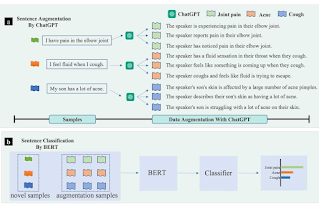The Release of ChatGPT 4: A Revolutionary Language Model
The most recent iteration of OpenAI's GPT-3 natural language processing tool was made available on June 11, 2020. The AI world has been blown away by the outstanding language understanding skills of this new model, known as ChatGPT. In this article, we'll talk about ChatGPT's launch and examine some intriguing details regarding GPT-3 and GPT-4, which it replaced.
What is ChatGPT?
OpenAI's ChatGPT language model produces responses to natural language questions that are human-like using deep learning techniques. ChatGPT is intended to be a general-purpose language model capable of comprehending and responding to a variety of topics, in contrast to earlier language models that were solely focused on specific tasks like sentiment analysis or translation.
Read Also: List Of Best Chatgpt prompts Compilation
Why is ChatGPT revolutionary?
The capacity of ChatGPT to produce responses that are nearly indistinguishable from those written by a human is what makes it revolutionary. Natural language processing has advanced significantly with this degree of accuracy, and it has the potential to change a variety of fields, including customer service, content development, and education.
How does ChatGPT work?
Unsupervised learning is a technique that ChatGPT makes advantage of, so it can learn without labeled data. Instead, it learns to produce responses based on patterns and context found in vast amounts of material from the internet. Since the model is built using a transformer architecture, it can learn from the context of entire sentences or paragraphs rather than just a single word.
Interesting Facts About GPT-3
GPT-3, the predecessor to ChatGPT, was released in June 2020 and quickly gained widespread attention for its impressive language capabilities. Here are a few interesting facts about GPT-3:
It has 175 billion parameters, making it the largest language model ever created.
It can generate coherent and contextually relevant responses to a wide range of topics, including poetry, jokes, and even programming code.
It has been used to create chatbots, language translators, and even video game AI.
What We Can Expect from GPT-4
Despite the fact that OpenAI has not yet made any public announcements on GPT-4, it is most probable that it will expand upon the excellent language abilities of its predecessors. There may be need for improvement in the following areas:
- Increased accuracy and context sensitivity.
- Better handling of specific languages and dialects.
- Improved understanding of sarcasm and humor.
- GPT-4, however, contains 100 TRILLION ML PARAMETERS.
- Videos, images, sounds, numbers, and other sorts of data can all be processed by GPT-4.
- By the end of next week, it will be possible to create actors for a movie using artificial intelligence (AI), develop a movie, and release it without using real-life actors.
- You will be able to write a 200 page book from start to finish in one day by the end of next week.
Read Also: How To Jailbreak Chatgpt all Techniques
Braun said at an event in Germany that GPT-4's arrival was imminent, and the new model would introduce multi-modal models that will offer new possibilities, such as videos. Multi-modal LLMs draw information from various types of sources and could provide GPT-4 with information from videos and images it finds on the internet. OpenAI's current LLM, GPT-3.5, is text-based only.
GPT-4, a new large language AI model being developed by OpenAI, is anticipated to be immensely more powerful than ChatGPT. According to Microsoft Germany's CTO, Andreas Braun, GPT-4 could be released as soon as next week. This is anticipated to expand the applications of generative AI in the enterprise.
Since 2019, Microsoft has partnered with OpenAI and invested $1 billion in the business, with additional funding coming in January 2022. Altman, the CEO of OpenAI, tried to temper expectations earlier this year by saying that the system was likely to "leave people dissatisfied." GPT-4's capabilities have been the topic of rumors for a while.
Microsoft has already been experimenting with multi-modal AI models, and the company recently released details of Kosmos-1, a model that can draw on data from text and images.
While OpenAI has not yet released any official details about GPT-4, the announcement from Microsoft Germany's CTO suggests that the model will be released soon, As soon as next Week, which could offer new capabilities and possibilities for generative AI. The industry eagerly awaits the release of GPT-4 and its potential to further advance the capabilities of natural language processing tools.
Conclusion
As a result, the introduction of ChatGPT represents a significant advancement in the field of natural language processing and has the potential to alter how humans interact with AI and computers. We can only speculate about the novel and fascinating opportunities that will be made possible by these potent language models as we eagerly await the publication of GPT-4.




